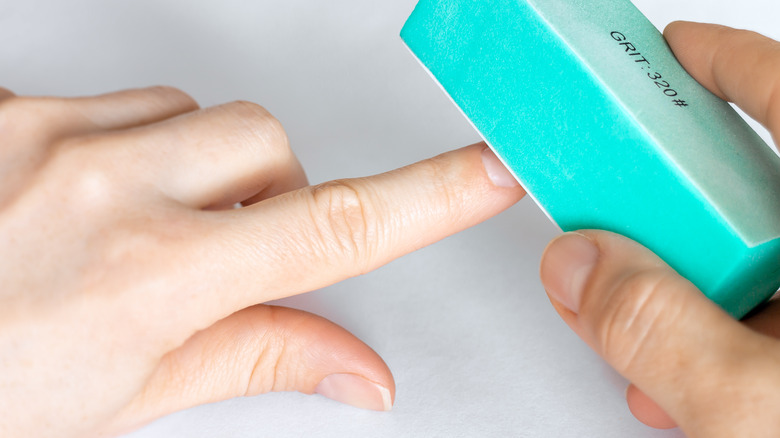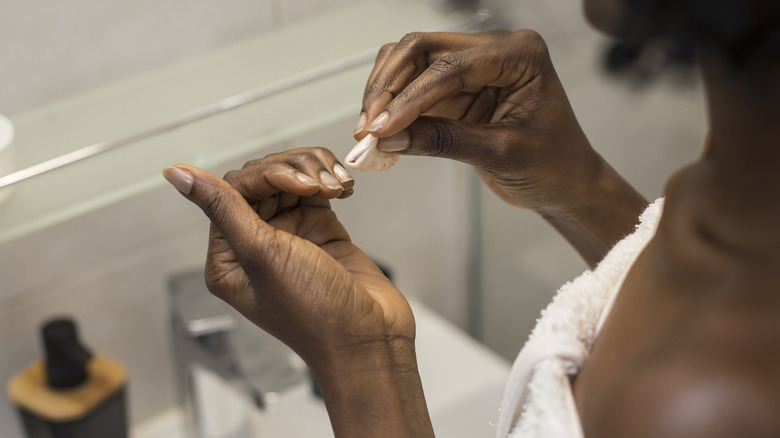The Important Rule To Follow When Buffing Your Nails
In a time when creative and often over-the-top manicures and pedicures are all the rage, we sometimes forget how great a simple, naturally shiny nail can look. While this brand of mani or pedi can be attained through a clear polish, if you want to avoid chemicals of any kind, then nail buffing is the best way to achieve a high-level, healthy shine. It's not just chemical-free and super affordable, but you don't have to worry about anything chipping — something that can drive many people into a nail-related crisis.
"Buff nails feel fresh," fashion news editor Alessandra Codinha told Vogue. "Less uptight. It's just the right amount of natural. And if you have a nice bit of shine to your nail, it's kind of the dressiest way to do nothing."
While there will always be a place for the hottest nail trends of every season, if you're looking for a cleaner, simpler version of chic, then buffing your nails is the way to go. It's just important that you keep some nail buffing rules in mind, so you don't end up upsetting your nails and hands in the process.
Understand what buffing is and why it's important
Although it might be easy to assume that buffing just smooths out the texture, there's more to it than that. "When you buff the nail, it brings the blood to the surface the same way that pinching your cheeks does," manicurist Michelle Saunders told Harper's Bazaar. Buffing promotes circulation and is a form of exfoliation. Just like the rest of your body, your nails need to be regularly exfoliated so the dead cells can be removed and the new cells can flourish and shine.
"If you don't buff, the natural oils in your nails can build up, leaving manicure-ruining residue on them," Essie global lead educator Rita Remark told Glamour. "Buffing your nails is kind of like brushing your teeth — it's brightening, it makes nails look more youthful, and it gets rid of ridges." After a proper buffing session, your nails are primed for polish or, if you're skipping that step, they're beautiful enough on their own.
Don't overdo it
Once you know what buffing does to your nails, you're more likely to adhere to the most important rule to follow: don't overdo it. Just like too much exfoliation will dry out and damage your skin, the same will happen if you buff your nails too much. The nails can become brittle and painful, causing them to split or crack, and you can forget about them shining — they'll look dull instead. According to SINY Dermatology, you shouldn't buff your nails more than once a month. When you do, always use vitamin E to protect them.
You also want to make sure you use the right tools when buffing your nails. This means staying away from just regular emery boards and being aware of what the buffer you are purchasing should be used for. "Many of the buffers used in the salon setting and sold at beauty supplies shops are designed for acrylic nails, and so they can be very damaging to a natural nail," board-certified dermatologist Dr. Dana Stern told Byrdie. It's important to get a buffer that's not only designed for natural nails, but has different grits that's are also labeled so you know in what order to use each side to achieve maximum shine. Buffed nails always look good and certainly never go out of style, so give your nails a buff this month and enjoy the results.


